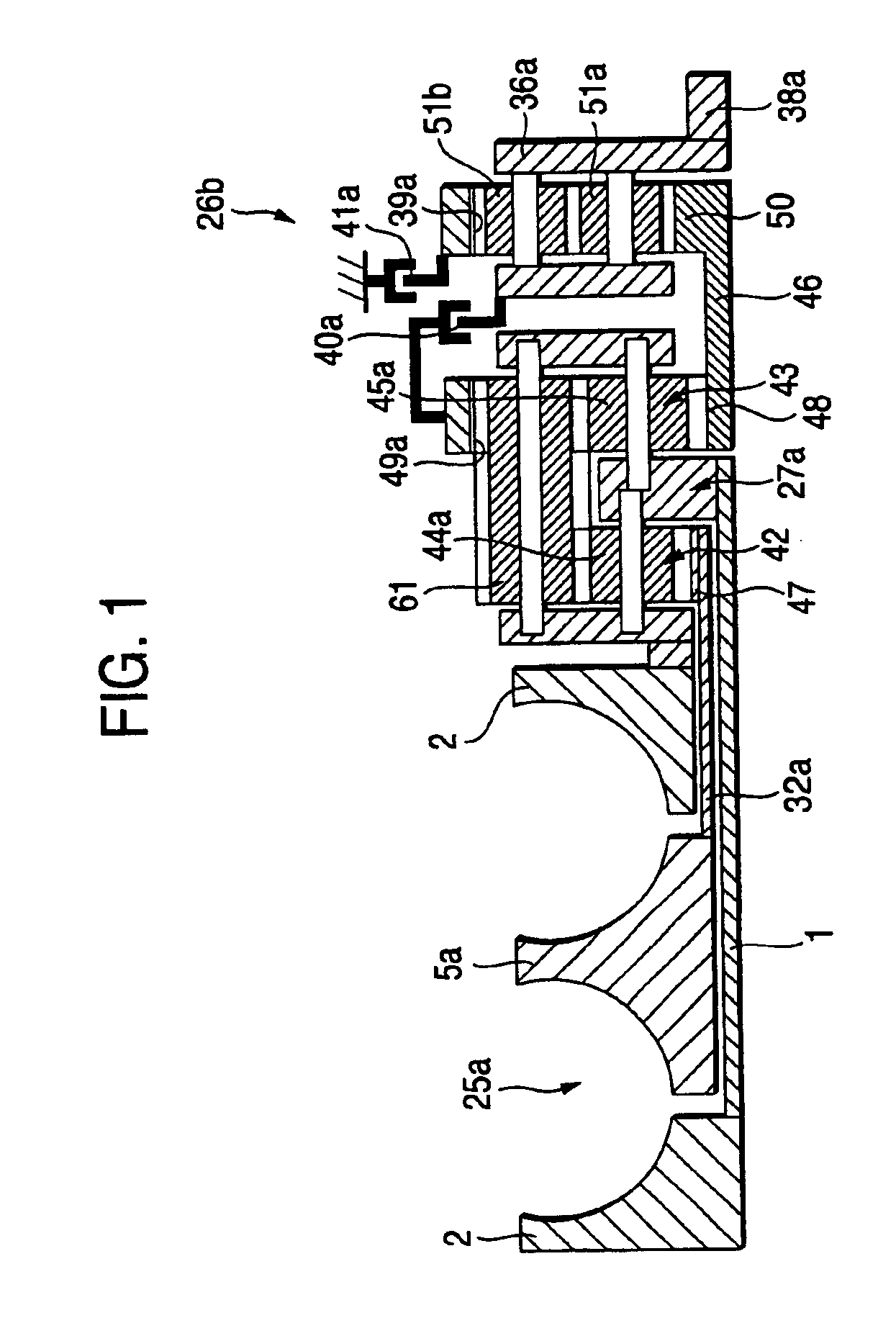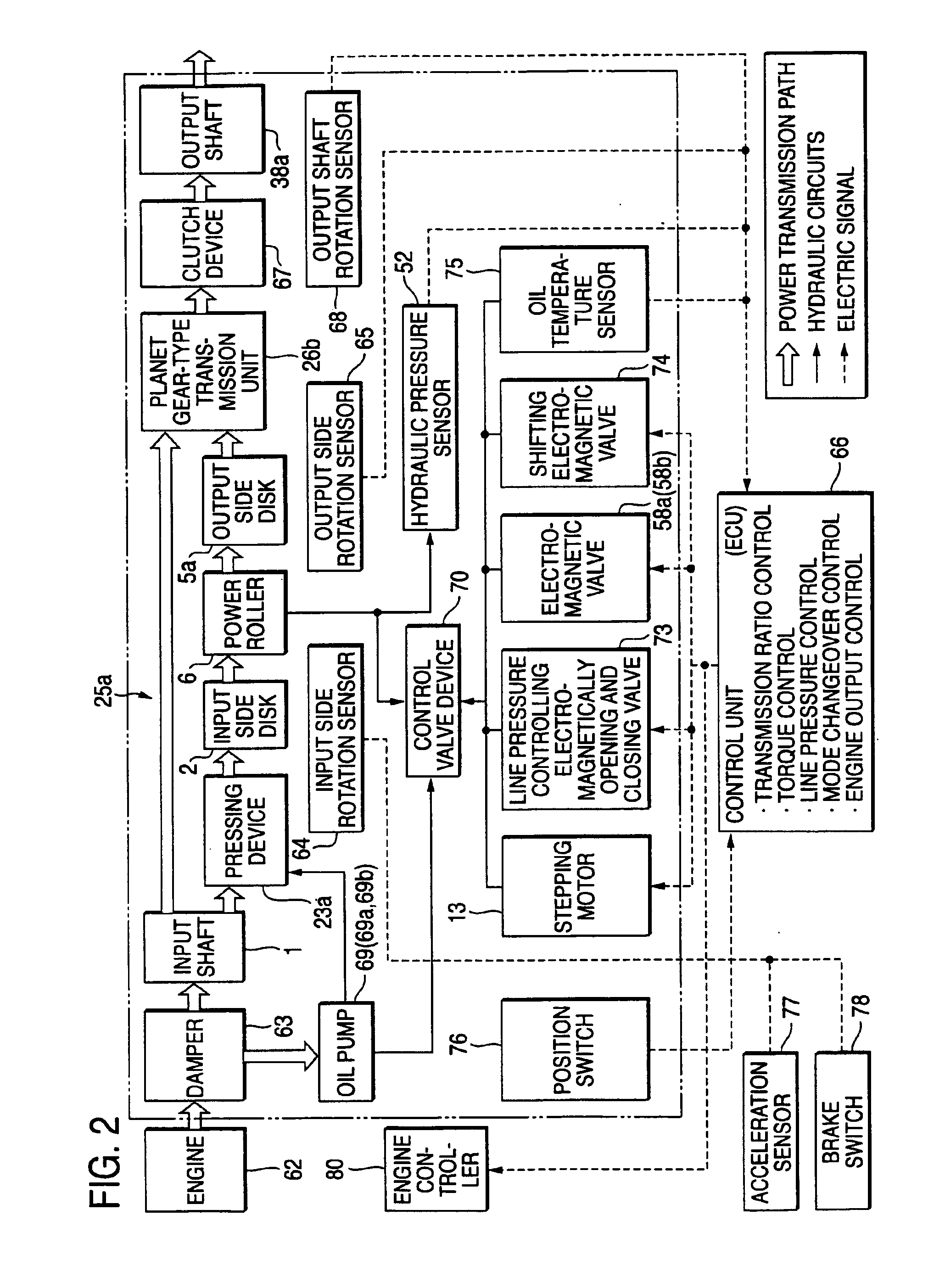Continuously variable transmission apparatus
a transmission apparatus and continuously variable technology, applied in the direction of friction gearings, gearing elements, gearings, etc., can solve the problems of affecting the operation of the vehicle, affecting the safety of the driver, and requiring a large effort to stop the vehicl
- Summary
- Abstract
- Description
- Claims
- Application Information
AI Technical Summary
Benefits of technology
Problems solved by technology
Method used
Image
Examples
Embodiment Construction
[0073]FIGS. 1 to 3 illustrate an embodiment of the invention. FIG. 1 illustrates an embodiment of a continuously variable transmission apparatus including, in combination, a toroidal-type continuously variable transmission unit 25a and a planet gear-type transmission unit 26b. The construction of this continuously variable transmission system is basically identical with those of the conventional continuously variable transmission apparatus shown in FIG. 7 or the continuously variable transmission apparatus shown in FIG. 8 that has been described above as the improvement over the one shown in FIG. 7. In particular, in the continuously variable transmission apparatus according to the embodiment, of respective planet gear elements which constitute primary and secondary planetary gears 42, 43 of the planet gear-type transmission unit 26b, an axially elongate planet gear element is used as a planet gear element 61 which is provided radially outwardly. Then, this planet gear element 61 is...
PUM
 Login to View More
Login to View More Abstract
Description
Claims
Application Information
 Login to View More
Login to View More - R&D
- Intellectual Property
- Life Sciences
- Materials
- Tech Scout
- Unparalleled Data Quality
- Higher Quality Content
- 60% Fewer Hallucinations
Browse by: Latest US Patents, China's latest patents, Technical Efficacy Thesaurus, Application Domain, Technology Topic, Popular Technical Reports.
© 2025 PatSnap. All rights reserved.Legal|Privacy policy|Modern Slavery Act Transparency Statement|Sitemap|About US| Contact US: help@patsnap.com



